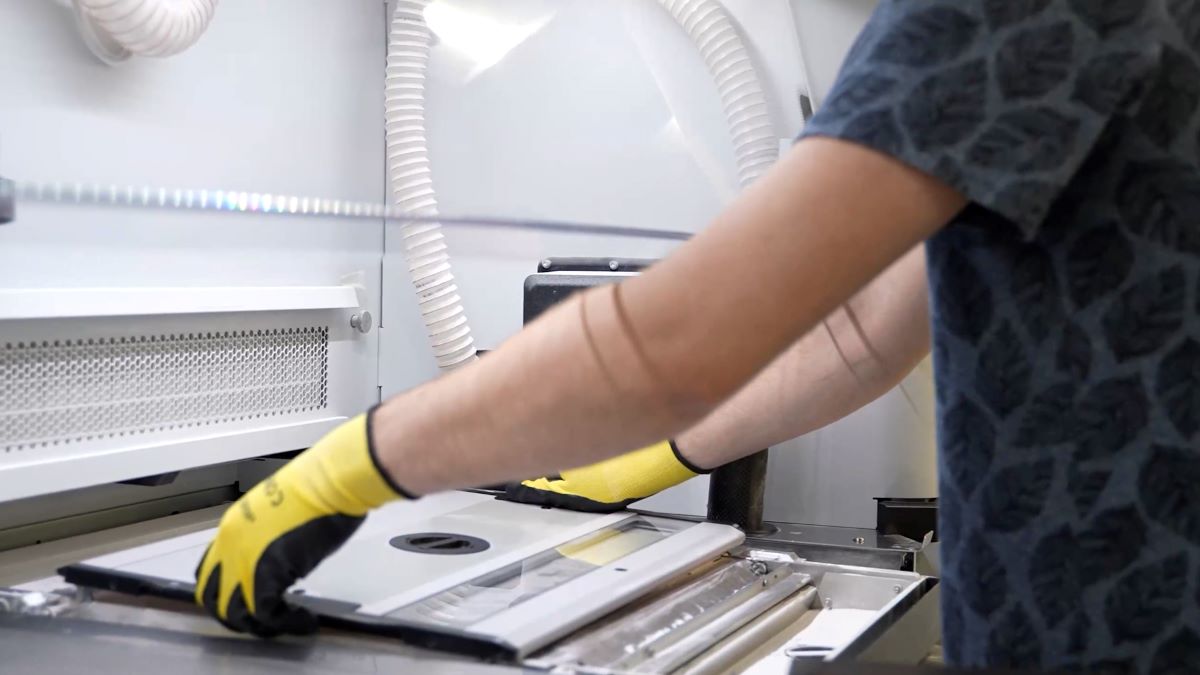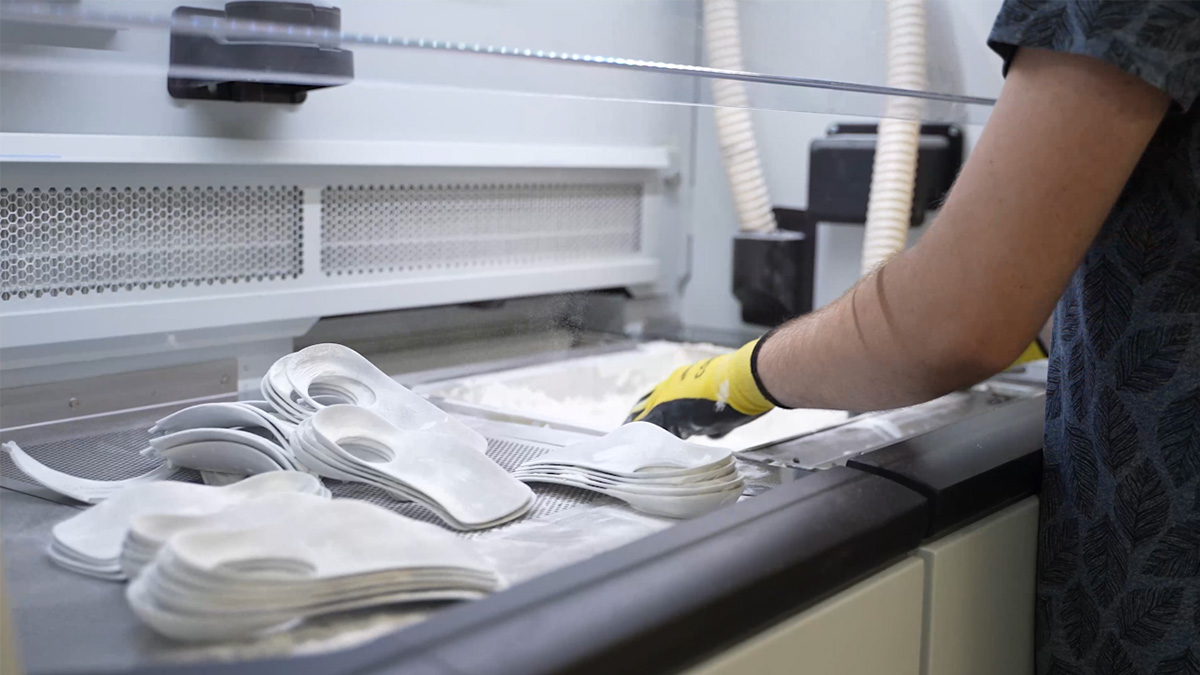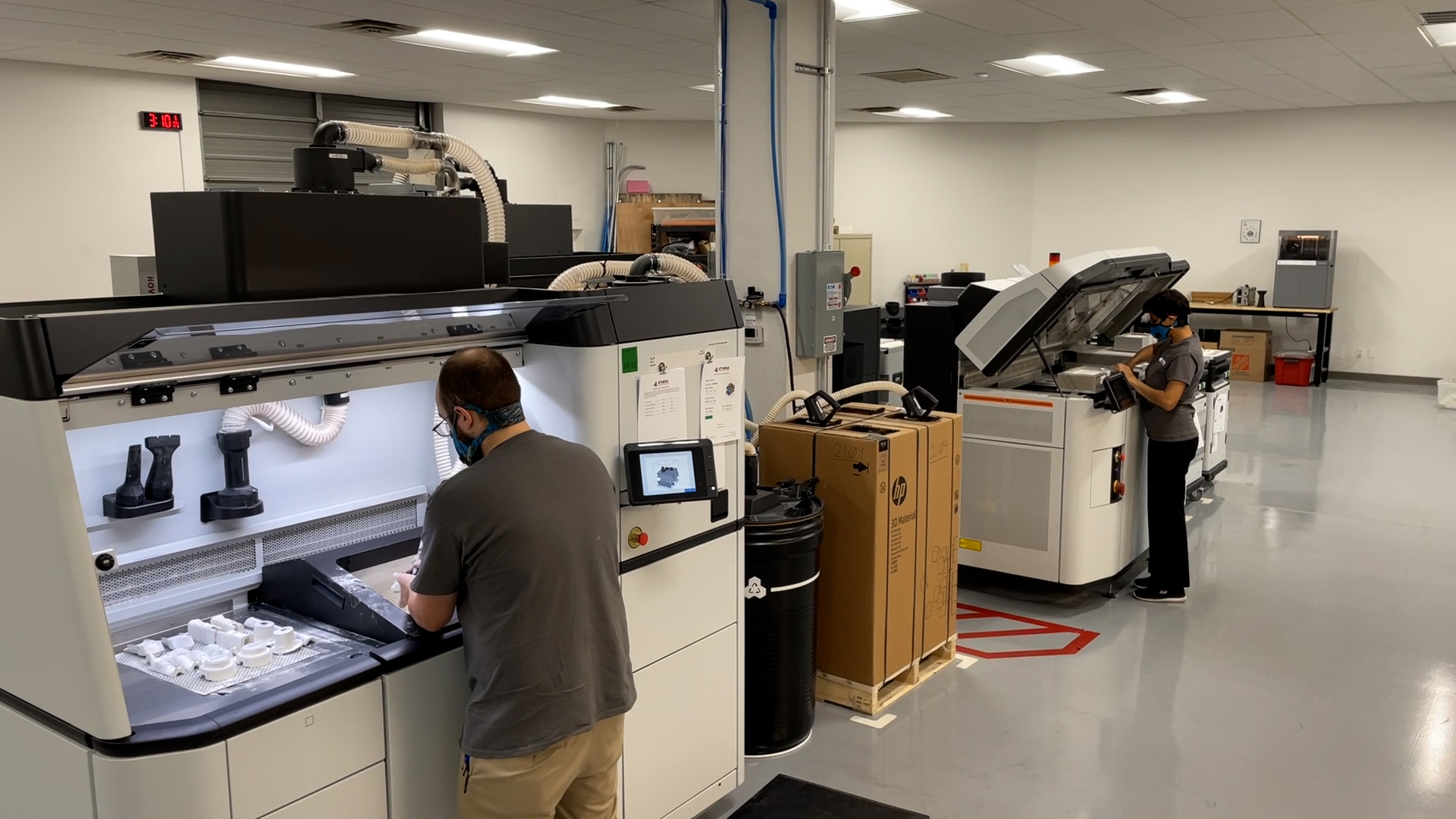In the dynamic field of additive 3D printing, safeguarding intellectual property is paramount. We will explore the crucial aspects of data security in manufacturing, regulatory requirements, legal means of intellectual property protection, and best practices.
The Importance of Intellectual Property in 3D Printing
Intellectual property (IP) forms the foundation of innovation and competitiveness in manufacturing. The designs and methodologies developed are significant investments, so, prioritizing data protection must be an organizational priority from day one. The digital nature of these assets exposes them to risks of theft and misuse, underlining the need for effective data security measures. The repercussions of inadequately safeguarding intellectual property are lessons the United States is all too familiar with.
Lockheed Martin Unintentionally Assisted China with Revolutionary Design Information
The F-35 and F-22 military fighter jets share similar characteristics. Both were designed and developed by Lockheed Martin to provide a strategic advantage to the United States and its allies. The F-22 program, officially known as the “Advanced Tactical Fighter Program”, aimed to produce a fifth-generation combat aircraft that incorporated advanced stealth capabilities, multi-role functionality, and state-of-the-art avionics. These features were expected to ensure a substantial edge over existing and future military aircraft used by potential adversaries by 20-30 years. Instead of attempting to meet the challenges and engineer a response, China responded by maliciously infiltrating the prime subcontractor’s supplier network to obtain the technology. After some reverse engineering, China launched the J20 Mighty Dragon fighter jet on January 11th, 2011, just six years after the F-22 had officially entered service. By focusing their data breach on the F-22’s radar design, stealth capabilities, engine design, and electronic warfare and communication systems, the J-20 was able to leapfrog over years of development and testing, simply by taking the intellectual property from its advisory.
Cybersecurity Maturity Model Certification (CMMC) History
While the events that lead to the need for the implementation of a stricter cyber security measure occurred during the Bush administration, it wasn’t until the Obama administration took office that the foundation for the Cybersecurity Maturity Model Certification (CMMC) was established. Armed with the recognition of an urgent need by the United States’ Department of Defense, a plan was adopted based on the guidance from the National Institute of Standards and Technology (NIST) 800-171 framework. This ultimately resulted in the conception of the CMMC. The original intent of the CMMC was to transition from self-attestation of compliance to a certified and independently witnessed audit of an organization’s basic cyber hygiene.
Under the Trump administration, the Cybersecurity Maturity Model Certification advanced further. In 2020, the official CMMC Standards were released, complete with 5 different security levels to achieve. They ranged from level 1, where a company needs only to understand the requirements, up to level 5 where it’s expected that companies pioneer cyber security practices and identify new threats not yet seen in the industry. The goal was that by 2026, all Pentagon contracts would include CMMC requirements, impacting more than 300,000 contractors. Under the Biden administration, the CMMC 2.0 was released. It reduced the number of controls and reduced the levels of security from five levels to three, among other simplifications.
The Biden administration’s official primary focus has been on removing any barriers faced by participants in the Department of Defense’s acquisition system. The goal is to increase cybersecurity with as little impact on operational costs as possible.
Unique Challenges of Data Security in 3D Printing
3D printing’s reliance on digital files and interconnected systems introduces unique security challenges. Data travels across multiple platforms, each with potential vulnerabilities. Additionally, the decentralized nature of 3D printing often means data is shared outside a single facility, increasing risks of unauthorized access. At the very basic level, implementing good practices is the first step to securing your intellectual property.
Implementing Robust Security Measures
Ensuring data safety is a whole beast that often requires dedicated staff. While not a complete list, securing data in 3D printing involves the incorporation of several strategies:
- Encryption: Essential for making data files unreadable to unauthorized users for data in transit and at rest.
- Access Control: Limits data access to authorized personnel only, both physically and digitally.
- Network Security: Utilizing secure network protocols, VPNs, firewalls, and intrusion detection systems to protect data in transit.
- Regular Audits and Updates: Identifying vulnerabilities and keeping systems updated with the latest security patches.
- Employee Training: Educating staff on data security best practices, including password management, and recognizing phishing attempts.
- Addressing the Human Element: Insider threats, whether intentional or accidental, are a significant concern. Promoting a culture of security awareness and educating staff about the importance of IP protection is vital.
Partnering with Trusted Vendors
Collaborating with external partners and vendors is common in manufacturing. It’s so common in fact that the Society of Automotive Engineers (SAE) addresses how AS9100-certified companies qualify, analyze, add, and remove vendors from their supplier list. Within the Aerospace world, it wouldn’t be uncommon for a manufacturing business to be approved within a large OEM for a single product or process. Ensuring these partners adhere to strict data security standards is crucial. Your data should not be shared with anyone who doesn’t need it, and your partners should be enforcing this on their supplier networks. It is important to ensure that your potential partners are making cyber security a primary concern when evaluating new relationships. If you’re a company that orders products using a purchase order, then maybe it’s time to include data security protections as a requirement to do business.
Legal Protections for Intellectual Property
Patents, copyrights, non-disclosure agreements, and other legal tools offer an additional layer of IP protection. Understanding and utilizing these legal measures can deter IP theft and offer recourse in case of infringement.
- Patent: A patent is a legal right granted to an inventor by a government authority, giving the inventor exclusive rights to make, use, or sell their invention for a certain period, usually 20 years from the filing date. Patents are typically used for new inventions, including processes, machines, manufactured goods, and chemical compositions. The invention must be novel, non-obvious, and useful.
- Copyright: A copyright is a form of protection provided to the creators of original works of authorship, including literary, dramatic, musical, artistic, and certain other intellectual works. This protection is available to both published and unpublished works. Copyright does not protect ideas, only the expression or manifestation of those ideas. It typically lasts for the life of the author plus 70 years (or longer in some jurisdictions).
- Trademark: A trademark is a symbol, word, or phrase legally registered or established by use as representing a company or product. It protects brand names and logos used on goods and services, ensuring that consumers can identify the source of a product or service and helping to prevent confusion in the marketplace.
- Trade Secret: A trade secret is information that is not generally known to the public, confers some sort of economic benefit on its holder, and is the subject of reasonable efforts to maintain its secrecy. Examples include formulas, practices, processes, designs, instruments, or patterns. Protection of trade secrets is achieved through confidentiality agreements and other business practices.
- Industrial Design Rights: These rights protect the visual design of objects that are not purely utilitarian. An industrial design consists of the creation of a shape, configuration, or composition of pattern or color, or a combination of pattern and color in a three-dimensional form containing aesthetic value.
- Non-Disclosure Agreement: An (NDA) is a legally binding contract that establishes a confidential relationship between two or more parties. The primary purpose of an NDA is to protect sensitive information or trade secrets that might be shared between the parties involved, typically in a business context or during negotiations.
The Role of Quality Assurance in Data Security
In Quality Assurance, the focus extends to securing the integrity of data driving 3D printing processes. This involves updating security protocols, ensuring industry standard compliance, and working closely with IT teams to strengthen cybersecurity measures. In Quality Assurance, customer requirements must be met each time. While it’s easy to focus on 3D CAD, Materials, Finishes, lead times and pricing, the devil is in the details. Customer requirements come in all shapes and forms, including the requirement to meet cyber security and data protection requirements.
Conclusion
In the ever-evolving landscape of 3D printing, safeguarding intellectual property demands a holistic strategy that seamlessly integrates technological fortifications, employee education, legal fortifications, and a robust security culture. This comprehensive approach becomes even more powerful when augmented by the concept of observational learning—gaining insights from the mistakes of others without enduring the consequences firsthand. A prime example that underscores the importance of this approach is the cautionary tale of the F22 and the J20. This narrative serves as a potent reminder of the challenges and pitfalls in securing intellectual property within the 3D printing realm. As we navigate the dynamic terrain of this industry, our strategies must adapt and advance to ensure the steadfast protection of its most invaluable asset: intellectual property.
Interested in ensuring your IP is secured? Connect with us today to start a conversation.



